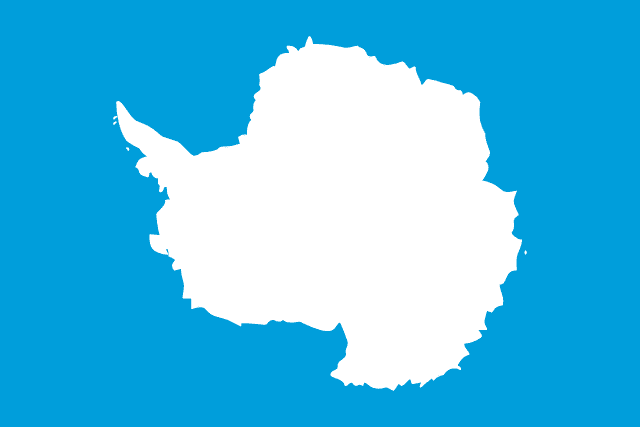Country Information
| Sovereign State | No (International Territory under the Antarctic Treaty System) |
| Country Codes | N/A |
| Official Name | Antarctica |
| Continent | Antarctica |
| Capital | None (No permanent residents, only research stations) |
| Government Type | International Treaty System |
| Currency | None (various currencies used at international research stations) |
| Calling Code | N/A |
| Member Of | Antarctic Treaty System |
| Population | No permanent population; approx. 1,000-5,000 temporary residents (scientists and support staff) |
| Total Area | 14,000,000 square kilometers |
| Highest Point | Mount Vinson (4,892 meters or 16,050 feet) |
| Lowest Point | Bentley Subglacial Trench (-2,540 meters or -8,333 feet) |
| GDP Per Capita | N/A |
| Life Expectancy | N/A |
| Internet TLD | N/A |
Antarctica National Anthem
Antarctica does not have a national anthem, as it is not a sovereign state and has no government or permanent population.
Flags of Neighboring Countries
Antarctica does not have neighboring countries as it is surrounded by the Southern Ocean. The nearest countries are Argentina, Chile, New Zealand, Australia, and South Africa.
History of the Antarctica Flag
Antarctica, as an international territory governed by the Antarctic Treaty System, does not have an official flag that represents sovereignty like other nations. However, there is a widely recognized flag used to represent the continent in certain international contexts.
The most popular unofficial flag of Antarctica is known as the “True South” flag, designed by Evan Townsend in 2002 as part of his graduate thesis. This flag is designed to represent the continent’s neutrality and scientific purpose. It features a white silhouette of the continent on a blue background, symbolizing the icy and oceanic nature of Antarctica. The white color represents the ice that covers the continent, and the blue symbolizes both the cold and the Southern Ocean that surrounds it.
The “True South” flag has gained popularity among the scientific community and is sometimes used at Antarctic bases and in educational contexts. It serves as a symbol of international cooperation in the spirit of the Antarctic Treaty, which sets aside the continent as a scientific preserve and bans military activity on the continent. The Antarctic Treaty, signed in 1959 and entered into force in 1961, has been signed by 54 countries and forms the basis for international governance of the continent.
This flag is not an official national flag but is an example of how symbols can represent the unique status of Antarctica as a place dedicated to peace, science, and international cooperation. The continent’s status as a global common, free from national sovereignty claims and dedicated to scientific exploration, is a remarkable aspect of international relations and is symbolized by this unofficial flag.

